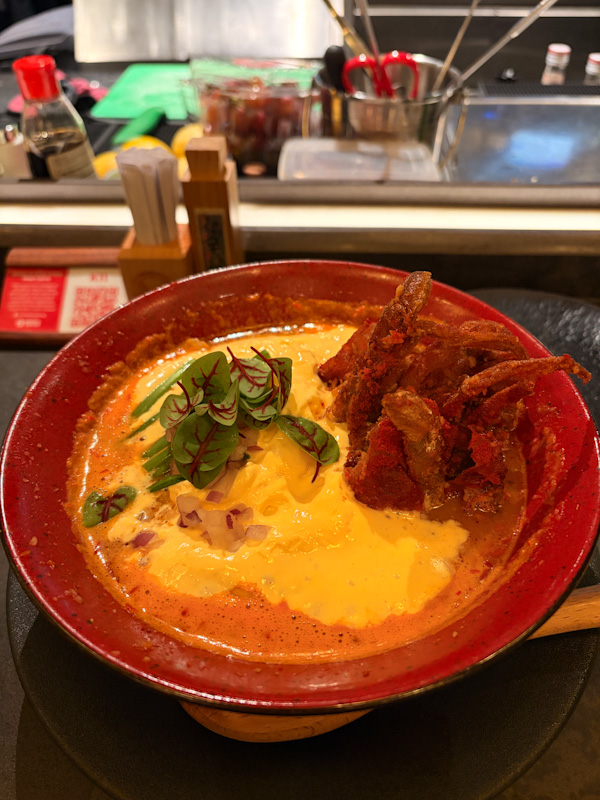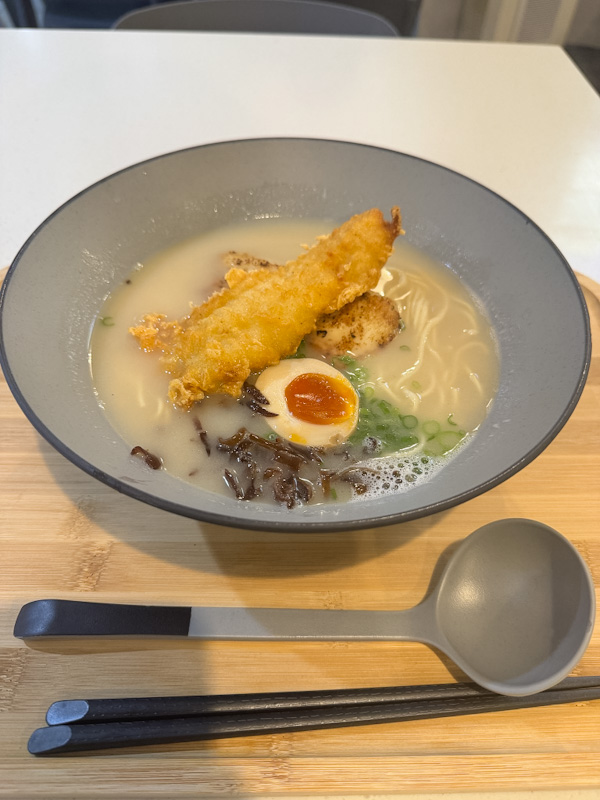WHAT WE ATE
- Mochi Mochi Mazemen, 95/100 (16 September 2025, One Raffles Place)
- Toripaitan Tsukemen, 100/100 (2 August 2025, One Raffles Place)
- Toripaitan Ramen, 95/100 (2 August 2025, One Raffles Place)
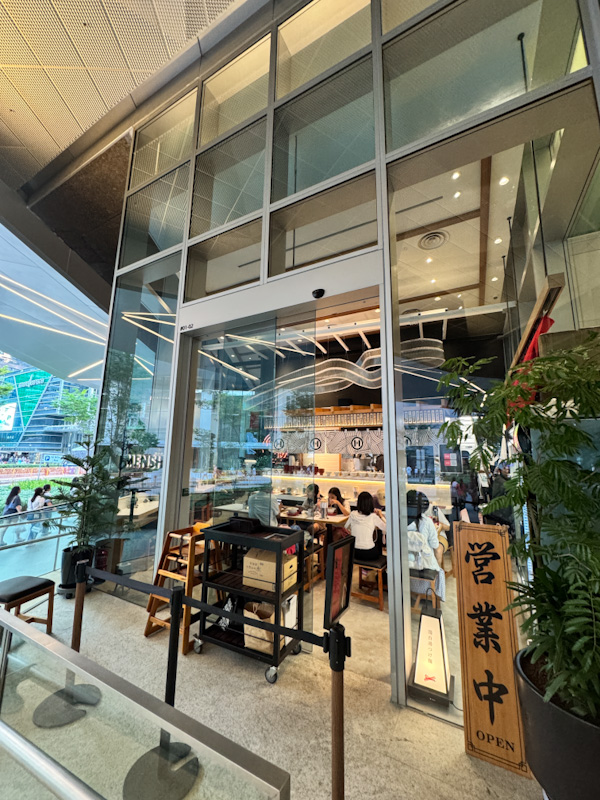
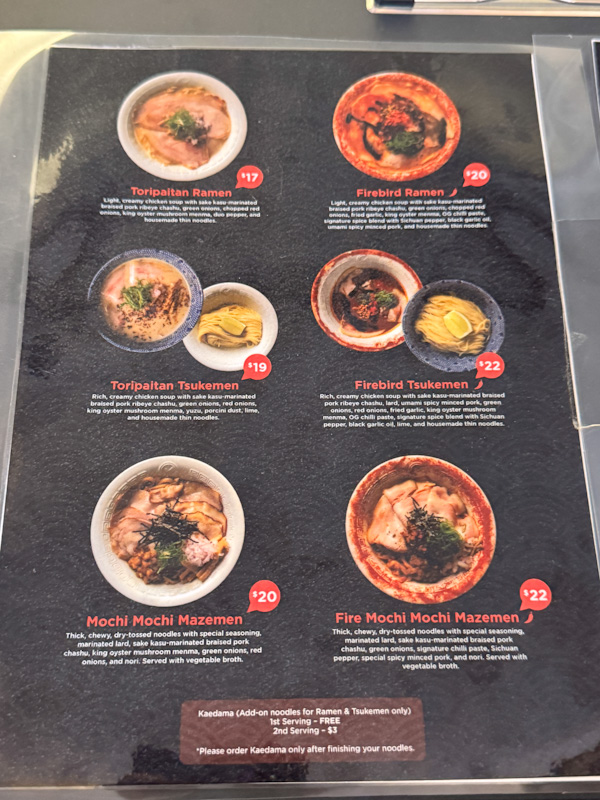
Tucked beneath 6 Battery Road in the heart of Raffles Place, Mensho X is the latest concept from Tokyo’s trailblazing ramen brand Mensho, led by celebrated chef Tomoharu Shono. Unlike its more upscale siblings, this fast-casual spin-off is designed for the Singapore CBD crowd—serving up signature bowls of Toripaitan, Tsukemen, and Mochi Mochi Mazemen in a tighter, quicker format. It’s also the first of its kind globally, with Singapore chosen as the testbed for this leaner concept.
The focus here is bold but deliberate: lighter chicken-based broths layered with kombu, shiitake, and porcini; house-blended spice powders; and noodles matched by texture to each style. Whether you’re hunting for top ramen near Raffles Place, comparing new contenders for the best ramen in Singapore, or just curious about a more inventive alternative to the usual tonkotsu ramen Singapore options—Mensho X earns a closer look.
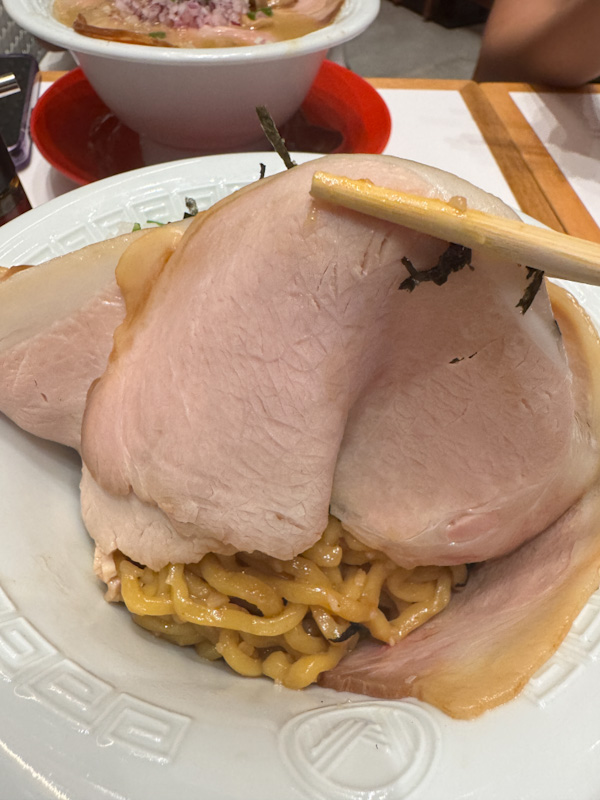
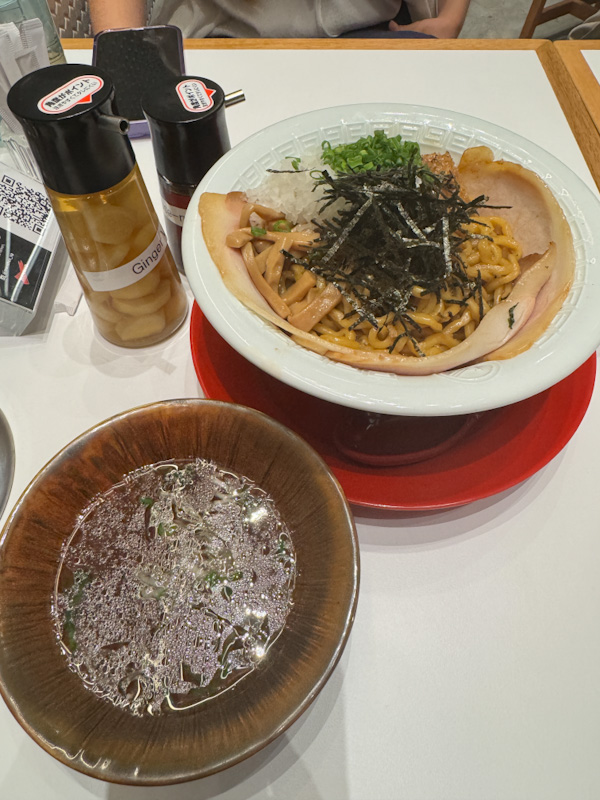
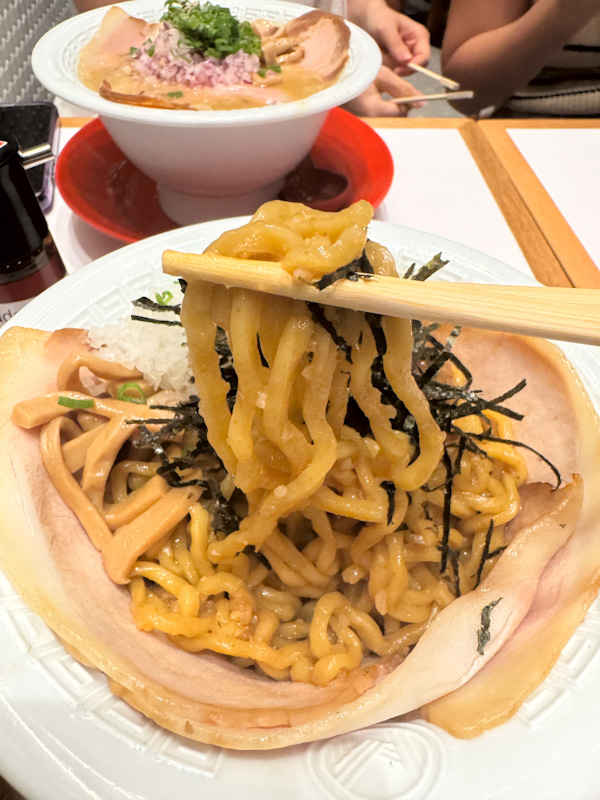
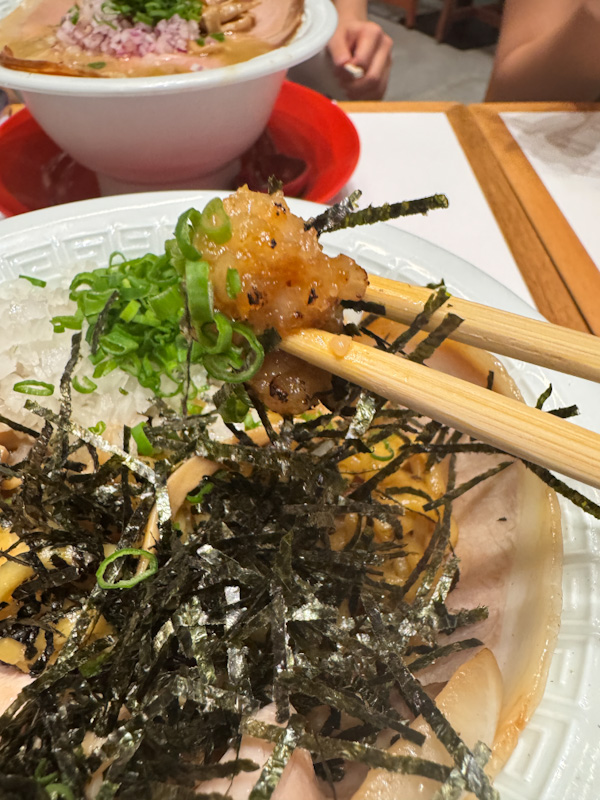
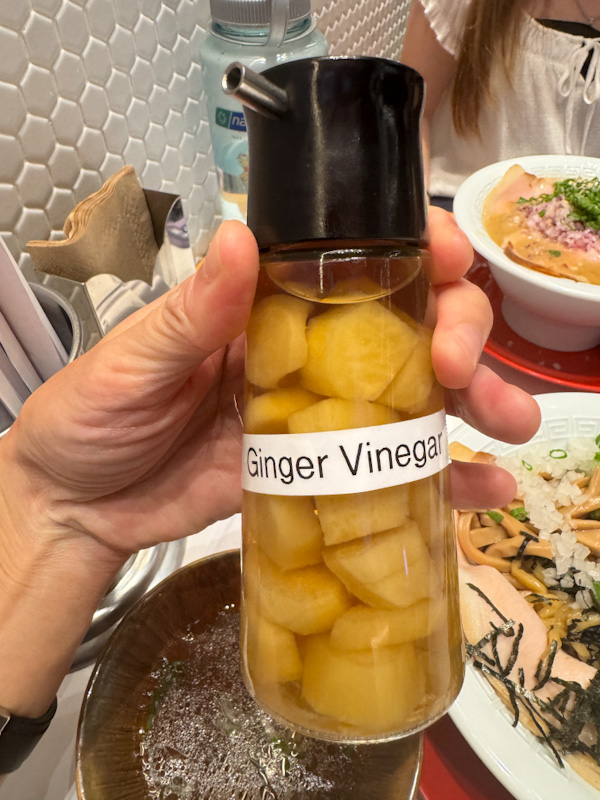
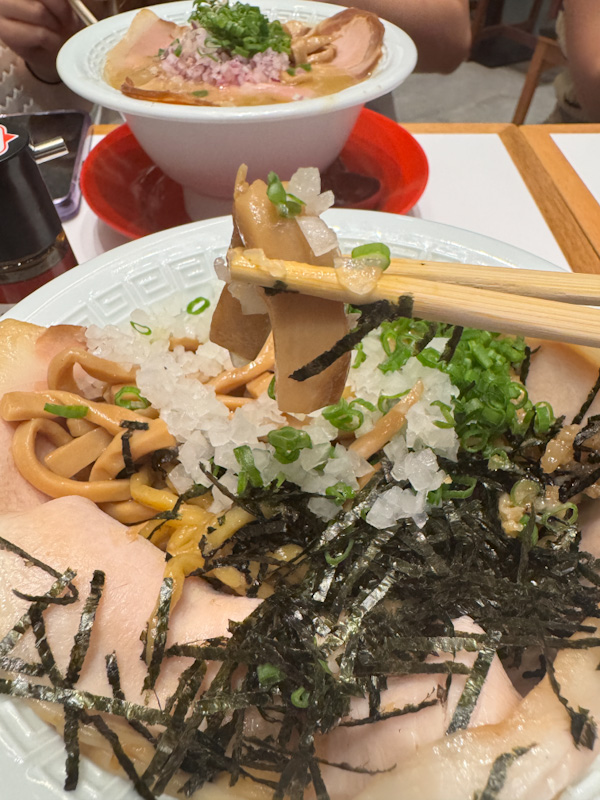
Mochi Mochi Mazemen: 95/100
Noodle: 35/35
The noodles here are the star—thick, curly, and unapologetically chewy. True to the term mochi mochi, the texture lands somewhere between springy resilience and soft chew, delivering that satisfying bite without tipping into jaw workout territory. The wheat flavour is robust and grounded, giving each mouthful a sense of density and substance. Importantly, there’s no trace of that acrid alkaline aftertaste that often plagues “chewy” noodles. These are well-crafted and deliberate.
Sauce & Soup: 30/35
Mazemen lives or dies by its sauce, and this bowl comes equipped with a trio: a sticky umami-rich base, a ginger vinegar for balance, and chilli oil left to personal discretion. A clear side soup rounds out the set.
- Base Sauce: Dense and sticky, clinging to the noodles with conviction. The flavour opens with savoury umami, edged by a mild saltiness, before trailing into a subtle sweetness. The umami is the defining note here—deep, moreish, and satisfying.
- Ginger Vinegar: Poured in three measured rounds as recommended, this doesn’t cut like a sharp acid but adds a tangy lift that amplifies the umami of the base sauce. The ginger presence is subdued—more a soft warmth than a pungent spike—but it keeps the palate refreshed.
- Side Soup: Surprisingly clear yet flavourful, with a clean, sweet-umami profile. It plays a supportive role, complementing the noodles without distracting from them.
I skipped the chilli oil this time to taste the flavours unadorned, but it’s an option for those chasing heat.
Meat: 20/20
Three to four large slices of chicken chashu arrive paper-thin yet broad, draping across the noodles. The cut leans lean, but the texture is almost fluffy, pulling apart with ease. The evenness of the cook suggests sous-vide precision, delivering juicy meat with none of the stringy dryness one might expect from chicken. The taste layers nicely: savoury chicken umami underscored by a cherry-wood-like sweetness and a faint tangy finish. Elegant and restrained, but quietly memorable.
Other Toppings: 10/10
The supporting cast is varied and thoughtful. Pickled mushrooms add crunch and a subtle tang, while seaweed contributes a briny umami that deepens the dish. Negi is fresh and bright, though the onions lacked the sharp piquancy to cut through the richness. Most intriguing was a small scoop of what seemed like rendered fat—mysterious in form but effective in adding body and a touch of decadence without greasiness. Together, these toppings complete the bowl, each playing a distinct role.
Summary:
Mochi Mochi Mazemen impresses with perfectly chewy wheat-forward noodles, a layered umami sauce brightened by ginger vinegar, and a side soup that adds balance. The chicken chashu is tender and nuanced, while varied toppings—from pickled mushrooms to a mysterious scoop of fat—add texture and depth. A thoughtful and near-complete bowl that scores high on both craft and satisfaction.
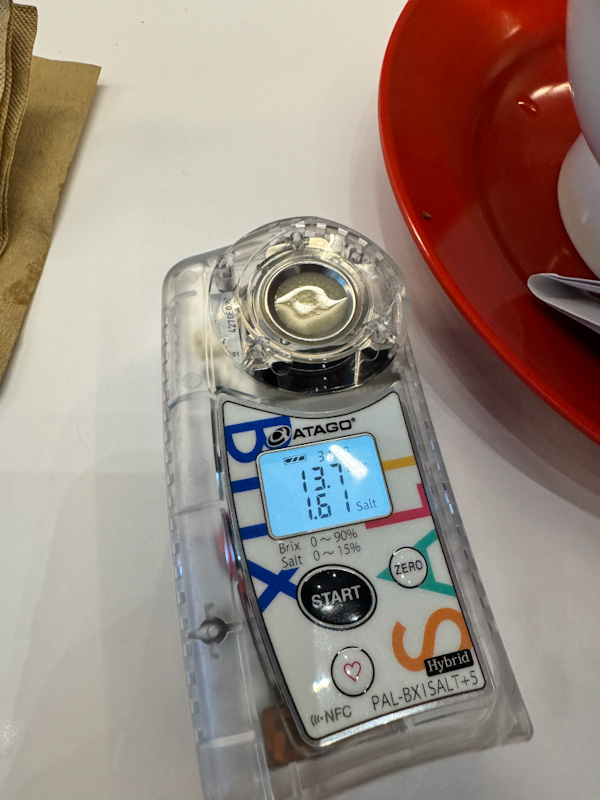
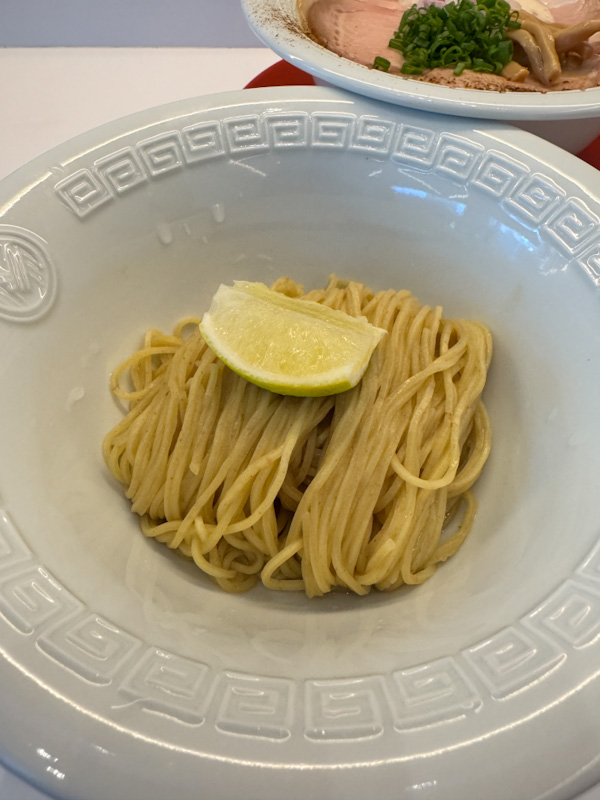
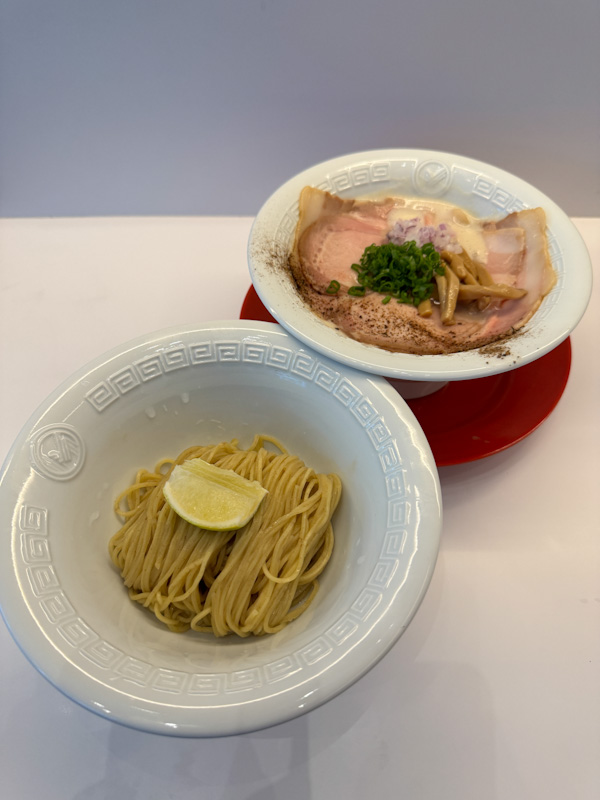
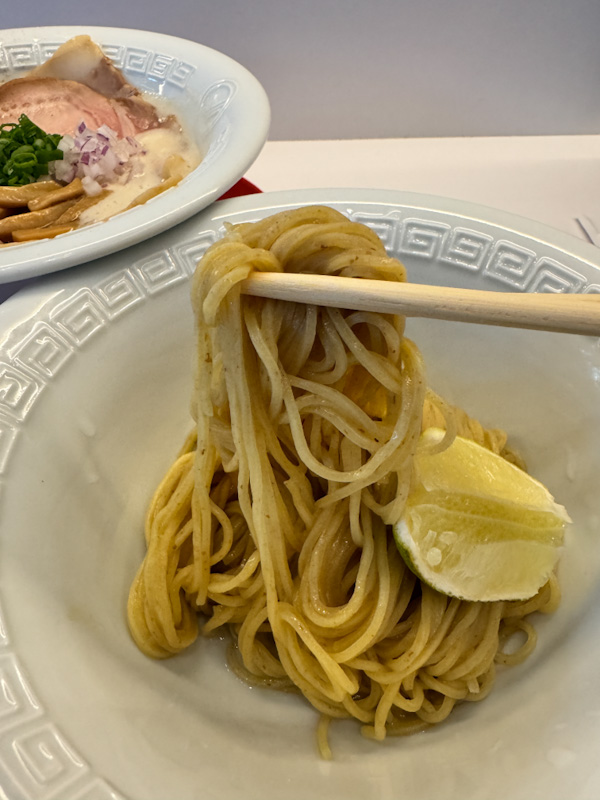
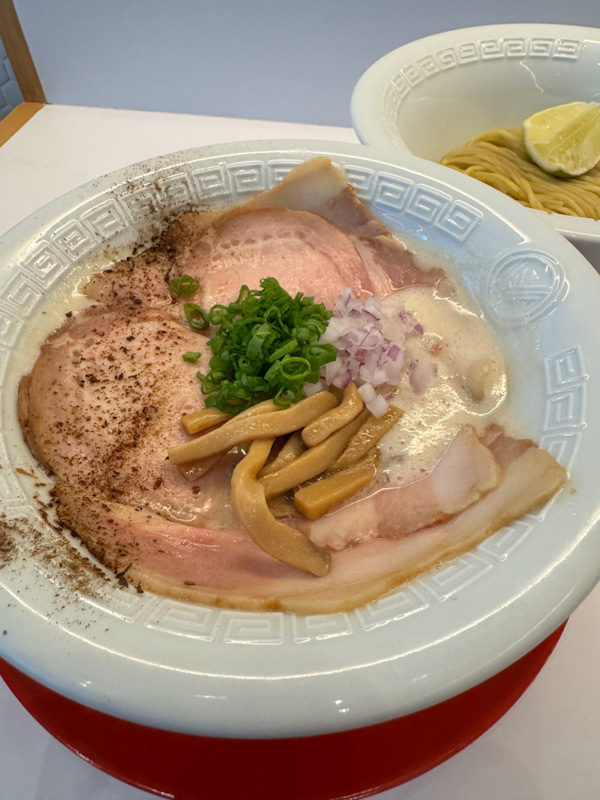
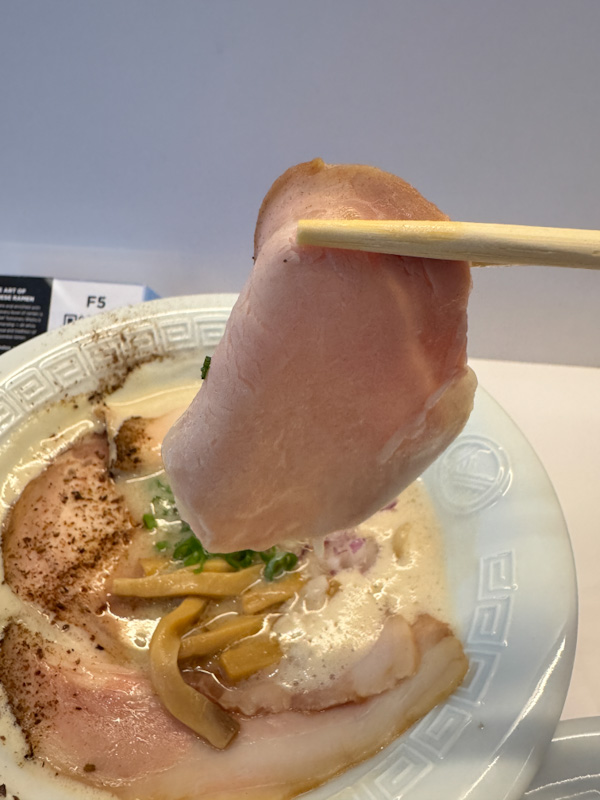
Toripaitan Tsukemen: 100/100
Noodle: 35/35
The noodles arrive cold, as they should in a tsukemen, but the first thing that caught my eye was their unusual appearance — thin, straight, light yellow strands speckled with brown flecks. Not the typical mochi-mochi yellow ropes common in tsukemen.
The texture leans chewy and springy, but not in an overtly bouncy way — more like a quiet resistance that gives in at the right moment. Think refined elasticity, not rubber band.
Mouthfeel is excellent: clean, polished, yet satisfying. The taste is distinctly earthy, possibly from wholemeal flour or even a buckwheat blend. There’s a light soba-like nuttiness, which gives the noodle an artisanal character. It’s subtle, but purposeful — a clear departure from the egg-heavy noodles found in most bowls.
Soup/Sauce: 35/35
The dipping soup is a toripaitan (creamy chicken broth), but this one doesn’t open with the usual richness. Instead, it hits you with something unexpected — a sharp, citrusy tang. At first, I wondered if I’d squeezed in too much lime, but nope — the sour note is built into the broth itself. It’s sharp, even slightly acrid at the start, but that sourness mellows quickly into a bright, appetising tone that builds appetite with every dip.
From there, it transitions to what you’d expect from a good toripaitan — a rich, savoury body full of deep chicken umami. It coats the noodles lightly without overwhelming them. Toward the end of each bite, there’s a lingering sweetness and a curious nutty finish that adds complexity and lift.
This soup is layered and unusually structured. It doesn’t just sit heavy on the palate — it develops across the slurp. A standout tsukemen broth.
Meat: 20/20
Thin but aplenty slices of pork ribeye chashu accompany the noodles. The cut is a clean ribeye cut as noted on the menu. The texture is soft and tender, with the fats melting easily — just enough chew to remind you it’s pork not jelly.
There’s balance in the marination — a mellow savoury sweetness, but still respectful of the pork’s natural flavour. No over-reliance on sauce or smoke. It doesn’t try to compete with the soup, and that restraint works in its favour.
Other Toppings: 10/10
- The “menma” isn’t bamboo — it’s actually made from king oyster mushrooms. It brings a chewy, konnyaku-like bounce, with a slightly sweet, earthy taste that rounds out the texture spectrum nicely.
- Scattered across the surface of the dipping soup is a fine brown powder, which I believe is porcini dust (as noted in the menu). On the tongue, it registers faintly — a warm, woody whisper. But what’s striking is its aroma: it carries a coconut-like scent, subtle but persistent, almost like a warm breeze that passes intermittently through the meal. It doesn’t overpower, but it leaves a rather delighting impression.
- A slice of lime is served on the side. A touch of it brightens the noodles, enhances the sour notes of the broth, and adds contrast without disruption.
- Some red and green onions that gives a subtle kick. It doesn’t taste like our usual onion which can be quite sharp. This one is mellow but pointed.
- The negi, unfortunately, is a letdown. Dried out, lifeless, and absent in taste. It felt more ornamental than functional. Thankfully, even without it’s piquant notes the other toppings did a good job.
Summary
This is not a tsukemen for everyone. It’s unorthodox, pushing boundaries both in structure and flavour — but with control and finesse. The sourness, the earthy coconut perfume, the soba-like noodles — they all work together like a quietly complex jazz riff. If you’re looking for comfort food, look elsewhere. If you’re looking for thinking ramen, this is it.

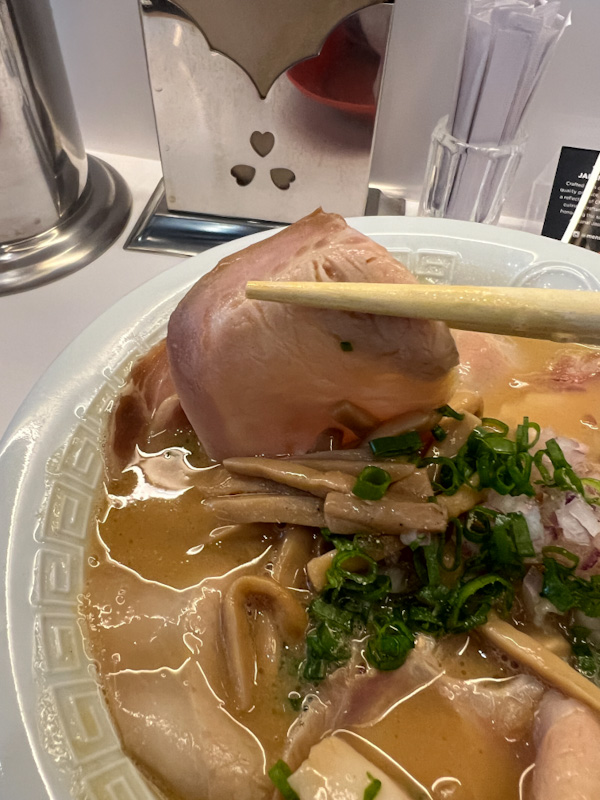
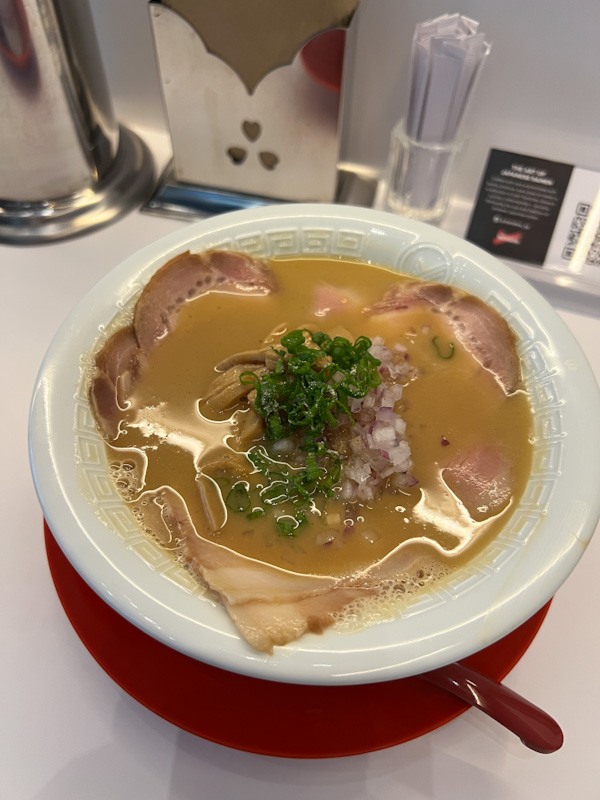
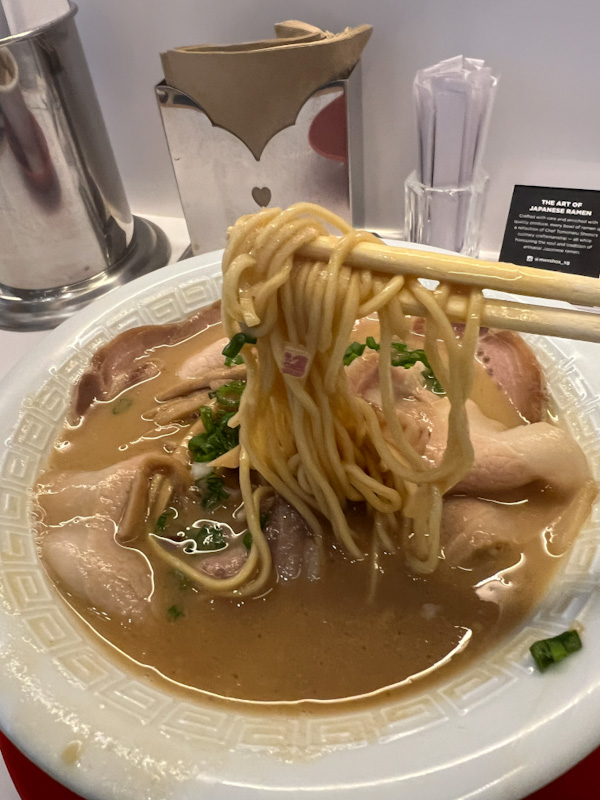
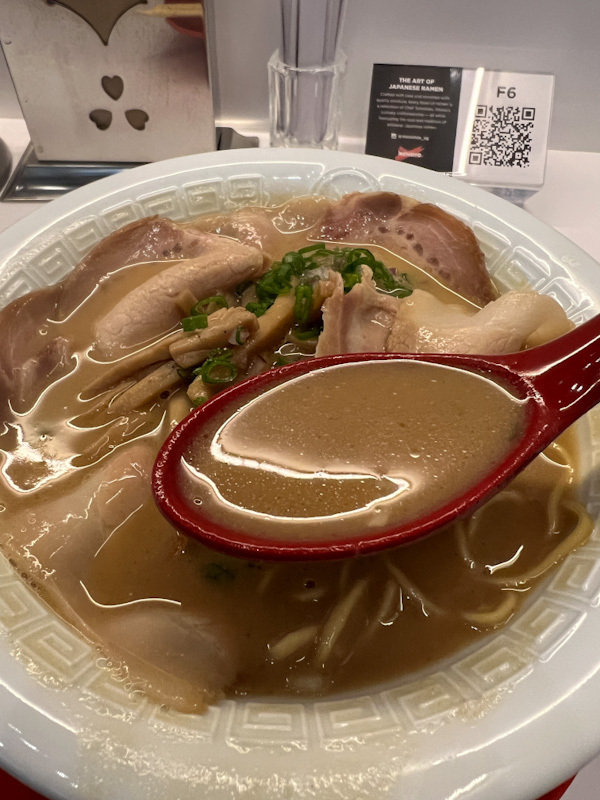
Toripaitan Ramen: 95/100
Noodle: 35/35
This bowl features a medium-thin, slightly wavy noodle — different from the tsukemen, but equally well considered. It’s served al dente, with a good snappy bite that stays resilient from start to finish.
It seems to be a semi low-hydration noodle, as it clings slightly to the teeth — not in a sticky way, but in a way that adds textural satisfaction. There’s a sturdy mouthfeel that persists, even as the noodles absorb more broth. No sogginess, no slouch.
On flavour, it holds its own: a distinct earthy wheat profile that grounds the noodle against the soup’s richness, giving the meal balance and weight.
Soup: 35/35
This toripaitan soup doesn’t hold back. It opens with a dense, silky texture, and the first sip delivers an immediate, robust savoury hit — unfiltered, umami-rich, and unapologetically bold.
The body of the soup gradually unfolds into a familiar toripaitan sweetness — creamy chicken umami with depth and roundness. But then it does something interesting:
At the very end of the sip, a nutty, woody warmth creeps in, almost like the tail of a spice blend. It doesn’t linger — in fact, it disappears almost as quickly as it appears — but its presence gives the soup a deliberate closing note, like a curtain drop.
Is this the duo pepper that’s mentioned in the menu? Possibly. It doesn’t read as heat or sharpness, but rather a warm, dry spice — comforting but enigmatic.
There’s storytelling in this broth. It’s structured like a score — an overture, a progression, and a soft unresolved chord to end on. It demands attention.
Meat: 20/20
The same pork ribeye chashu appears here, this time with more slices — thin, but generous. As before, the cut is clean, and the texture is just right: soft, tender, and yielding, with melty fats that complement the creamy broth.
It’s lightly marinated, a mellow savoury sweetness while letting the pork’s own character shine without trying to make a statement. There’s no smoke, no theatrics, just well-executed restraint. It works especially well here, where the soup already takes center stage.
Other Toppings: 5/10
- The king oyster “menma” returns. Still chewy, still slightly sweet, still a clever and satisfying swap that adds bounce without the vinegary jolt of typical bamboo.
- Red and green onions offer a gentle, pointed lift. Not as sharp as raw onions — more mellow, but with intention. It’s a background note that adds contour.
- And once again, the negi disappoints. Dry, limp, and tasteless. It adds nothing but colour, and even that feels obligatory.
Summary
This bowl is all about balance and build-up — it’s more classic in tone — but it still plays with structure and sequencing. The unexpected spice at the end is a smart touch, and the noodle-soup-meat harmony is undeniable. The only thing holding it back is the toppings — particularly the uninspired negi, which feels like an oversight in an otherwise thoughtful bowl. Still, it’s a bowl that respects the form while nudging at the edges. Worth the visit.
DISCLAIMER
One man’s meat is another man’s poison.
Find out more about our palettes and how we evaluate our ramen here. 😉

